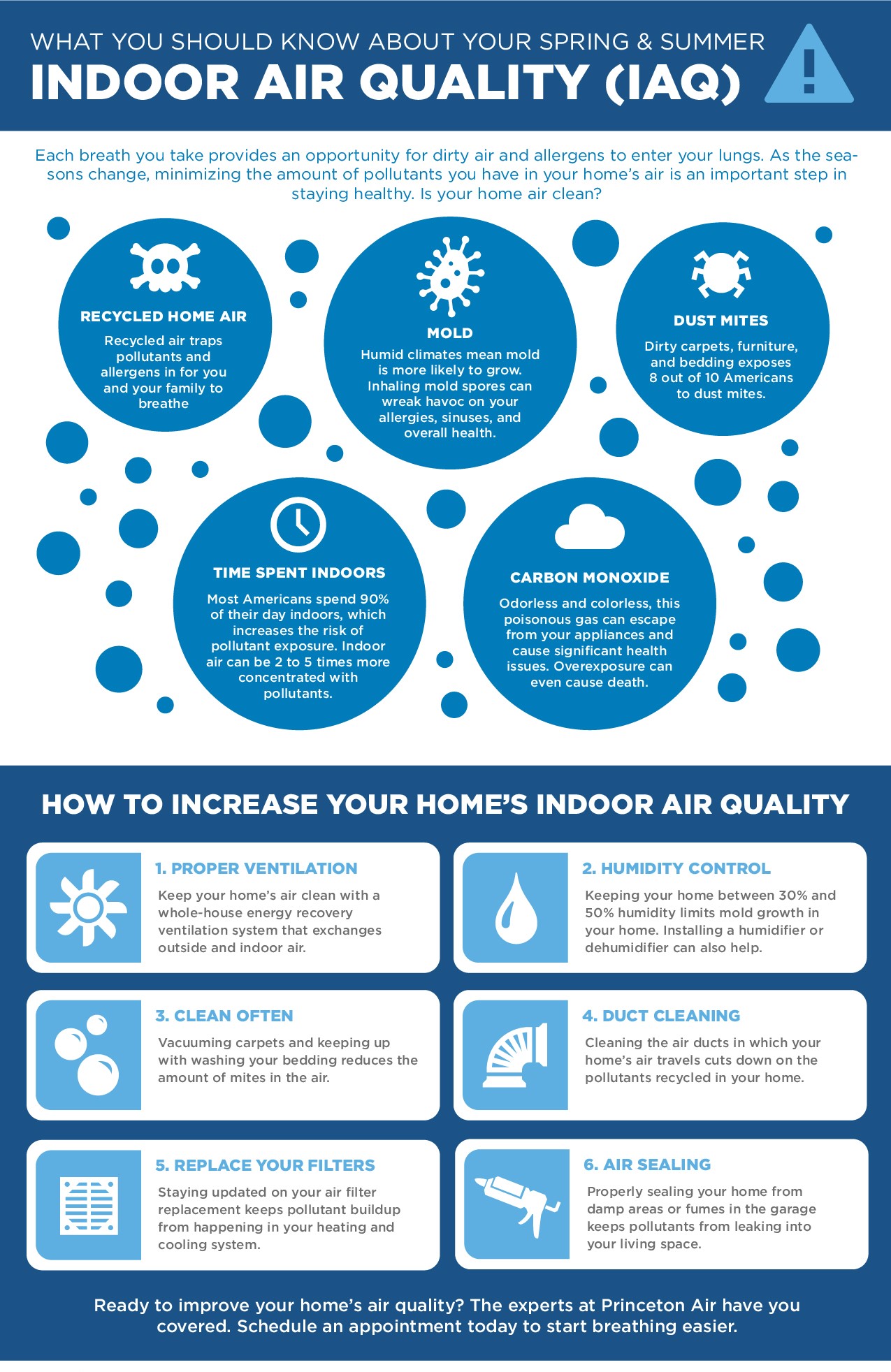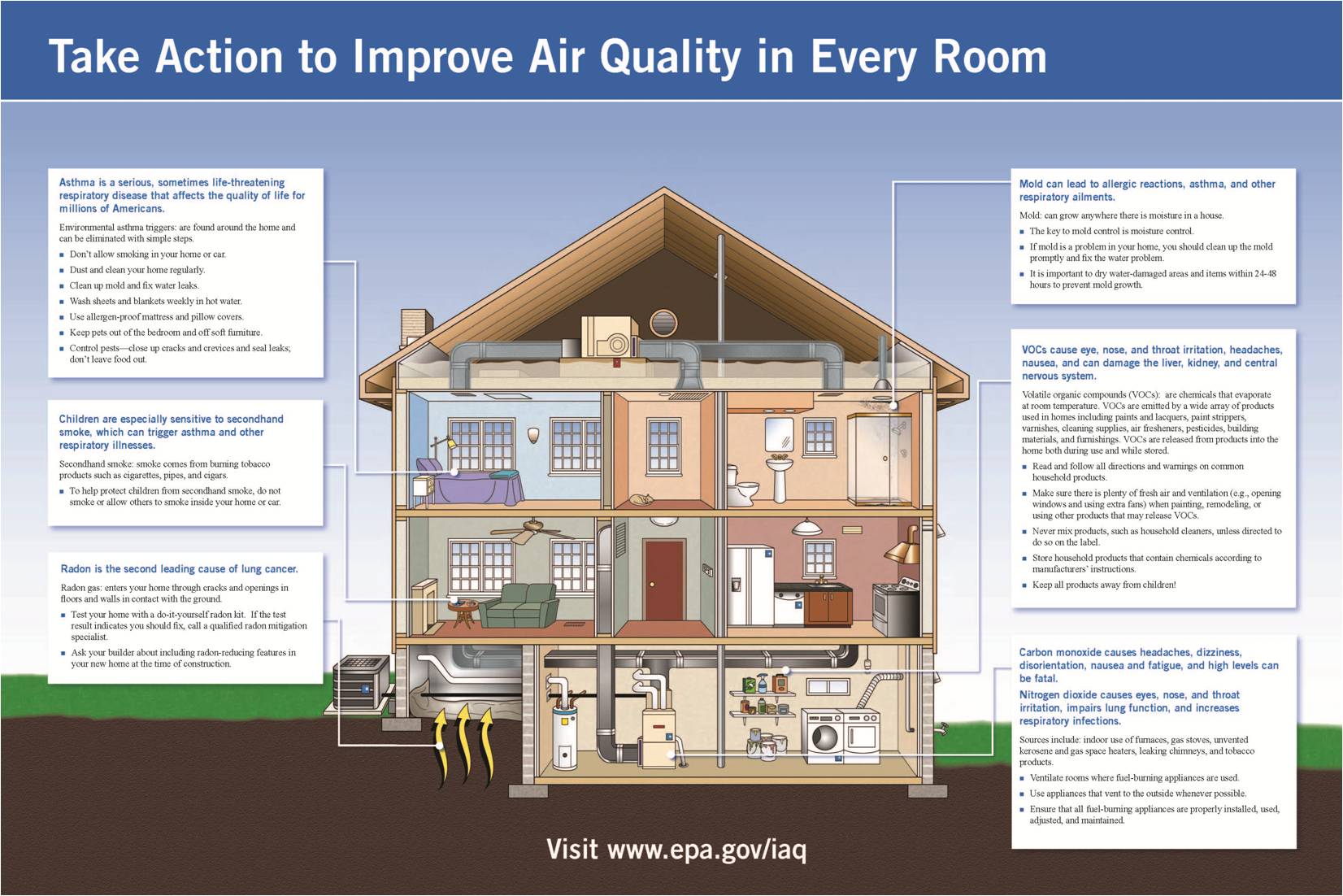Preventing mold growth is crucial for maintaining good indoor air quality. Mold can cause health problems and damage your home.
Mold thrives in damp, humid environments. It can lead to allergies, respiratory issues, and other health problems. Keeping your home mold-free is essential for a healthy living space. By controlling moisture levels, ensuring proper ventilation, and maintaining cleanliness, you can effectively prevent mold growth.
In this blog post, we will discuss practical steps to keep mold at bay and improve your indoor air quality. These simple yet effective measures will help you create a healthier, safer home environment for you and your family. Let’s dive in and learn how to tackle mold growth head-on.

Credit: www.princetonair.com
Causes Of Mold Growth
Mold growth in your home can harm your health and indoor air quality. Understanding the causes of mold growth is key to preventing it. Here are some common reasons mold may appear in your living spaces.
Moisture Sources
Mold needs moisture to grow. Leaky roofs, windows, or pipes can create damp areas. Flooding or spills that are not cleaned quickly can also cause mold.
Condensation on walls, windows, or pipes can lead to moisture buildup. Humidity levels above 60% can make your home a breeding ground for mold. Controlling moisture is crucial.
Poor Ventilation
Good airflow helps keep moisture levels low. Poor ventilation traps moisture inside. Bathrooms, kitchens, and laundry rooms need proper exhaust fans. Without them, steam and moisture linger.
Blocked air vents or closed doors can also prevent air circulation. Ensuring good ventilation keeps air dry and mold-free.
Health Risks Of Mold
Mold can harm your health by causing allergies and respiratory issues. Keep indoor spaces dry and ventilated to prevent mold growth. Regular cleaning and using dehumidifiers can help maintain better air quality.
Mold can be a silent threat in your home. It doesn’t just damage surfaces. It poses serious health risks, too. Mold spores in the air can lead to various health problems. Understanding these risks can help you take action.Respiratory Issues
Mold spores can irritate your lungs. Breathing them in can cause coughing and wheezing. People with asthma might experience flare-ups. Prolonged exposure can lead to chronic respiratory conditions. It’s important to keep indoor air clean.Allergic Reactions
Mold can trigger allergies. Symptoms include sneezing, runny nose, and itchy eyes. Some people may develop skin rashes. These reactions can be severe for sensitive individuals. Keeping mold at bay can prevent these issues. “`Identifying Mold Hotspots
Identifying mold hotspots in your home is crucial for maintaining better indoor air quality. Mold thrives in areas with moisture, warmth, and poor ventilation. By pinpointing these hotspots, you can take steps to prevent mold growth and ensure a healthier living environment.
Bathrooms
Bathrooms are prime locations for mold growth. The constant presence of water and humidity creates an ideal environment for mold spores to thrive. Check areas around the shower, bathtub, sink, and toilet. Pay special attention to grout lines, caulking, and under sinks.
To prevent mold, ensure good ventilation. Use exhaust fans during and after showers. Wipe down wet surfaces and fix leaks promptly. Regularly clean tiles and grout with a mold-killing solution.
Basements
Basements are another common mold hotspot. They often have higher humidity levels and are prone to water leaks. Inspect walls, floors, and any stored items. Look for signs of dampness or water stains.
Improve basement ventilation to reduce moisture. Use a dehumidifier to maintain ideal humidity levels. Seal any cracks in the foundation and ensure proper drainage around your home. Store items in plastic containers to prevent mold growth on belongings.

Credit: www.instagram.com
Effective Ventilation Solutions
Preventing mold growth is crucial for maintaining good indoor air quality. One of the best ways to do this is by ensuring proper ventilation in your home. Effective ventilation solutions help reduce moisture and improve air circulation, which are key factors in mold prevention. Let’s explore some practical solutions.
Using Exhaust Fans
Exhaust fans play a vital role in controlling indoor humidity. Install exhaust fans in high-moisture areas like kitchens and bathrooms. These fans help remove moist air quickly, preventing mold growth.
Here are some tips for using exhaust fans effectively:
- Turn on the fan while cooking or showering.
- Keep the fan running for at least 15 minutes after use.
- Ensure the exhaust fan vents outside, not into the attic.
Improving Airflow
Good airflow is essential for preventing mold. Poor airflow can trap moisture and create an ideal environment for mold to grow.
Consider these strategies to improve airflow:
- Open windows regularly to let in fresh air.
- Use ceiling fans to circulate air in rooms.
- Move furniture away from walls to allow air to flow freely.
Use these solutions to keep your home mold-free and maintain better indoor air quality.
Controlling Indoor Humidity
Controlling indoor humidity is crucial for preventing mold growth. Mold thrives in moist environments. By managing humidity levels, you can improve your indoor air quality. This section will guide you through effective methods to control indoor humidity.
Dehumidifiers
A dehumidifier is an essential tool for controlling indoor humidity. It removes excess moisture from the air. This creates an environment where mold cannot grow. Place dehumidifiers in areas prone to moisture, such as basements or bathrooms.
- Choose a dehumidifier with the right capacity for your room size.
- Empty the water tank regularly to maintain efficiency.
- Clean the filter often to ensure optimal performance.
Proper Insulation
Proper insulation helps in maintaining indoor humidity levels. It prevents condensation, which can lead to mold growth. Insulate walls, roofs, and floors to keep moisture out.
- Use vapor barriers to block moisture from entering your home.
- Seal cracks and gaps to prevent air leaks.
- Ensure your home is well-ventilated to allow moisture to escape.
Good insulation also helps in regulating temperature. This reduces the risk of condensation. This way, you can keep your indoor air quality high and your home mold-free.
Regular Cleaning Practices
Regular cleaning is essential to prevent mold growth. It helps maintain better indoor air quality. Mold can cause health problems and damage property. Following a strict cleaning routine can help keep mold at bay. Implementing mold-resistant products and a cleaning schedule will ensure your home stays mold-free.
Using Mold-resistant Products
Using mold-resistant products can be a game-changer. These products are designed to prevent mold growth. Here are a few examples:
- Mold-resistant paint: Ideal for damp areas like bathrooms and basements.
- Mold-resistant drywall: Suitable for areas prone to moisture.
- Mold-resistant cleaning solutions: Effective for regular cleaning of surfaces.
Investing in these products can make a significant difference. They help in reducing mold growth and improving air quality.
Cleaning Schedule
Maintaining a cleaning schedule is crucial. Consistent cleaning prevents mold spores from settling. Here’s a simple cleaning schedule you can follow:
| Task | Frequency |
|---|---|
| Dusting surfaces | Weekly |
| Vacuuming carpets and rugs | Weekly |
| Cleaning bathrooms | Weekly |
| Wiping down kitchen surfaces | Daily |
| Checking for leaks | Monthly |
Sticking to this schedule helps in maintaining a clean and healthy home. It minimizes the risk of mold growth.
Remember, prevention is better than cure. Regular cleaning practices go a long way in ensuring better indoor air quality.
Quick Water Damage Response
Water damage can lead to serious mold growth. This affects indoor air quality. Acting fast is crucial to prevent issues. Here are effective steps to take.
Drying Wet Areas
Water can seep into walls, floors, and furniture. Drying wet areas quickly is essential. Use fans and dehumidifiers to speed up the process. Open windows to increase air circulation.
- Move wet items to a dry area.
- Use towels to soak up standing water.
- Place fans near wet areas.
- Run dehumidifiers to remove moisture from the air.
Tip: If water damage is extensive, consider professional help. They have specialized equipment for drying.
Repairing Leaks
Leaks are a common cause of water damage. Fixing leaks promptly can prevent mold growth. Check pipes, faucets, and roofs for leaks regularly.
- Inspect areas under sinks and around appliances.
- Check the roof for missing shingles or damage.
- Seal any cracks or gaps in walls and foundations.
- Replace faulty plumbing fixtures.
Important: Even small leaks can lead to big problems. Don’t ignore them.
By addressing water damage quickly, you can improve indoor air quality. Keeping your home dry and leak-free is key to preventing mold.
Professional Mold Inspection
Maintaining a healthy indoor environment is crucial for overall well-being. One key aspect is ensuring that mold does not grow in your home. Mold can cause various health problems, including respiratory issues. A professional mold inspection is an essential step in preventing mold growth and maintaining good indoor air quality. This section will provide an overview of when to call experts and the inspection process.
When To Call Experts
There are specific signs that indicate it is time to call mold inspection experts. These signs include:
- Persistent musty odors
- Visible mold growth
- Water damage or leaks
- Unexplained health issues like coughing or sneezing
If you notice any of these signs, it is crucial to seek professional help. Early detection can prevent extensive mold growth and costly repairs.
Inspection Process
A thorough mold inspection involves several steps to identify mold sources and affected areas:
- Visual Inspection: Inspectors will examine your home for visible signs of mold. They will check areas prone to moisture, like bathrooms and basements.
- Moisture Mapping: This step involves using tools to detect moisture levels in different parts of your home. High moisture levels can indicate potential mold growth.
- Air Sampling: Inspectors collect air samples to measure mold spore levels. This helps in identifying hidden mold that is not visible during the visual inspection.
- Surface Sampling: Samples are taken from surfaces to identify the type of mold present. This information helps in determining the best removal methods.
- Analysis and Report: The collected samples are analyzed in a lab. The inspectors will provide a detailed report with their findings and recommendations.
Understanding the inspection process helps you know what to expect and ensures that you take the necessary steps to maintain a mold-free home.

Credit: tempacurehvac.com
Frequently Asked Questions
What Causes Mold Growth Indoors?
Mold growth indoors is typically caused by excessive moisture. This can result from leaks, high humidity, or poor ventilation. Addressing these issues helps prevent mold.
How Can I Reduce Indoor Humidity?
To reduce indoor humidity, use dehumidifiers, air conditioners, and ensure proper ventilation. Fix leaks and dry wet areas promptly to prevent mold growth.
Are There Health Risks From Indoor Mold?
Yes, exposure to indoor mold can cause respiratory issues, allergies, and asthma. It can be particularly harmful to those with weakened immune systems.
What Areas Are Most Prone To Mold?
Areas prone to mold include bathrooms, basements, kitchens, and areas with water leaks. These spaces often have high humidity and poor ventilation.
Conclusion
Preventing mold growth is essential for better indoor air quality. Regular cleaning helps. Keep humidity levels low. Ensure good ventilation in all rooms. Fix leaks promptly to avoid moisture buildup. Use dehumidifiers in damp areas. Check and clean HVAC systems often.
These steps protect your home and health. Breathe easier with a mold-free environment. Make mold prevention a priority. Your indoor air quality will improve. Stay vigilant and proactive. Enjoy a healthier living space.
Rakib Sarwar is a Registered Pharmacist and a reputed health and wellness blogger. He has a great interest in Air purifiers.
